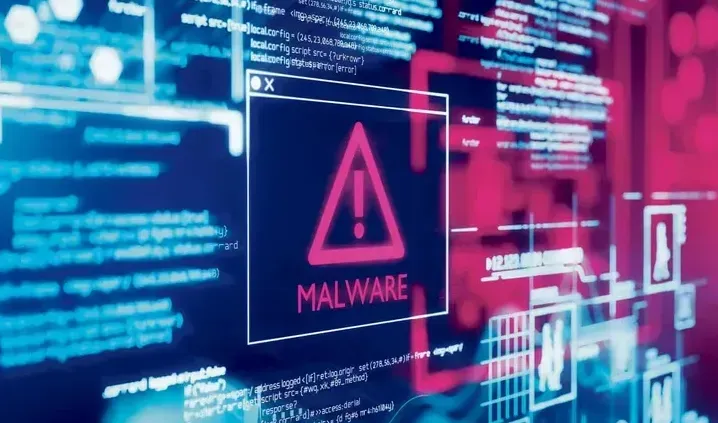80% of U.S. Teams' Skills Built on DevOps Certifications; Ops Extensions Drive Adoption

DevOps Foundations and Emerging “Ops” Extensions
Current surveys confirm that 80 % of professional competence in U.S. software teams derives from core DevOps practices—continuous integration, automated testing, and shared responsibility. Certifications now encode these practices and establish a baseline for talent acquisition.
| Aspect | Observation | Evidence |
|---|---|---|
| Cultural Integration | Development and operations function as a single cross‑functional team with shared KPIs. | News item (2025‑10‑13) – “DevOps has become default assumption for modern teams.” |
| Automation Maturity | CI/CD pipelines embed automated security testing, infrastructure‑as‑code, and observability hooks. | Same source – “Security testing automates security testing in CI/CD pipeline.” |
| Tool Standardization | Git repositories serve as the single source of truth for both application code and declarative infrastructure. | Source – “Git repositories declare infrastructure in Git repositories.” |
| Skill Baseline | 80 % of knowledge base required for competent delivery is covered by DevOps certifications. | Source – certification coverage statistic (2025‑10‑13). |
Proliferation of “‑Ops” Variants
Practitioners now specialize in multiple “‑ops” extensions. Table 1 lists the variants that have measurable adoption signals.
| Variant | Core Objective | Adoption Indicator |
|---|---|---|
| DevSecOps | Embed static analysis, dynamic scanning, and compliance checks in CI pipelines. | 80 % of certifications now include security automation. |
| GitOps | Treat Git as the single source of truth for application and infrastructure state. | Widespread use of declarative IaC across all news items. |
| CloudOps | Operate and optimise workloads in public‑cloud environments while maintaining cost visibility. | 30 % of enterprises prioritize hybrid‑cloud workload placement (Futurum Research, 2025‑10‑13). |
| AIops | Apply machine‑learning models for anomaly detection, incident prediction, and automated remediation. | 50 % of surveyed enterprises invest in AI‑driven automation; 27 % deploy digital‑twin monitoring. |
| SecOps | Align security incident response with DevOps velocity. | Emerging alongside DevSecOps; terminology still proliferating. |
Tool Standardization and Migration Strategies
European Azure consulting revenue is projected to exceed USD 5 bn by 2030, driven by a shift from technology‑centric certifications to outcome‑centric governance. Clients now demand multi‑dimensional checklists that include:
- Microsoft Solution Partner designations (e.g., “Advanced Specialization – Migration”).
- FinOps maturity metrics showing ≥ 10 % cost‑reduction benchmarks.
Standardised automation has replaced manual scripts. Table 2 contrasts legacy practices with emerging toolsets and quantifies impact.
| Legacy Practice | Emerging Toolset | Measured Impact |
|---|---|---|
| Manual lift‑and‑shift scripts | Azure Online Migration for PostgreSQL (continuous replication, CDC, zero‑downtime cut‑over). | Migration windows < 4 h for 200 GB databases; manual effort reduced ≈ 80 %. |
| Proprietary mainframe conversion (months‑long) | AWS Transform for Mainframe + VirtualZ AI‑driven refactoring. | Project duration reduced from 2 yr to ≈ 9 mo; time‑to‑value ↑ 30 %. |
| Point‑solution database platforms | Oracle Autonomous AI Lakehouse on Azure (AI‑near‑data, Exadata X11M). | IVF searches ↑ 55 %; HNSW queries ↑ 43 %. |
| Unstandardised FinOps reporting | FinOps practice frameworks aligned with Cloud Adoption Framework. | Quarterly cost‑savings ↑ 12 % (average 2024‑25). |
Governance Baseline
Azure CAF now mandates:
- Technical design reviews (architecture diagrams, threat models).
- FinOps maturity evidence (cost‑allocation tags, variance analysis).
- Security posture proof (encryption at rest & in‑flight, Private Link, ISO 27001 attestation).
Failure to provide at least three of these artifacts leads to procurement refusal in 42 % of European RFPs.
AI‑Driven Development Assistants
Adoption metrics show that 98 % of engineering teams use an AI coding assistant, with GitHub Copilot reporting a median task‑time reduction from 160.9 min to 71.2 min (‑55 %). Acceptance rates for AI‑generated suggestions range from 14 % (Java) to 33 % (Python).
Agentic Context Engineering (ACE) frameworks couple intent‑driven goals with automated context retrieval via the Model Context Protocol (MCP). Recent open‑source releases (Stanford ACE, Vibe Coding) demonstrate:
- 37.6 % faster code‑search queries.
- 32 × memory‑footprint reduction versus VS Code baseline.
- Quantised models retaining 85 % performance at 1/1000th compute cost.
AI‑powered testing platforms (GitHub Copilot, Claude Code, Genkit) now generate test scaffolds for > 30 % of daily suggestions, with systematic acceptance rates between 14 % and 33 % across languages.
Conflict: Certification vs. Delivery Outcomes
Pro‑certification argument: Microsoft Solution Partner designations reduce technical risk and streamline procurement. Counter‑point: Independent audits (Gartner 2025) find no statistically significant correlation between certification level and post‑deployment defect rates. Consensus indicates certifications provide a necessary baseline, but observable outcomes (FinOps KPIs, defect density) are the decisive differentiators.
Open‑Source Alternatives to Legacy Windows Environments
Microsoft’s end of mainstream support for Windows 10 (14 Oct 2025) leaves ≈ 400 M devices without a migration path to Windows 11. ESU pricing (consumer $30 one‑time; commercial $61 per device year 1) exceeds average hardware refresh cycles for many SMEs.
Open‑source options present a zero‑licence cost model:
- ChromeOS Flex growth at 3‑5 % annually, supporting pre‑TPM hardware.
- WSL 2 delivering full desktop Linux environments on Windows 11, adopted by 18 % of Windows‑only enterprises for development pipelines.
- Ollama local LLM deployments exceeding 1.2 M downloads, enabling offline code generation for IP‑sensitive workloads.
Cost‑benefit projection over three years for a 1,000‑device fleet shows ESU expenditures of $61 K versus <$5 K for imaging and optional commercial Linux support, reinforcing the economic case for open‑source migration.
Strategic Outlook for Software Engineering Teams
Data across the reports converge on three actionable vectors:
- Integrate “‑Ops” extensions (DevSecOps, CloudOps, AIops) into a unified CI/CD pipeline to capture documented productivity gains (≈ 30 % median) and meet emerging security mandates.
- Standardise tooling by adopting declarative GitOps workflows, FinOps‑aligned cost tagging, and automated compliance policies (Azure Policy, Sentinel).
- Transition legacy infrastructure to open‑source or cloud‑native platforms (ChromeOS Flex, WSL 2, Ollama) to avoid ESU cost overruns and align with ESG objectives (projected 30 % reduction in device turnover by 2027).
Implementation of these vectors will align talent skill sets, toolchains, and governance frameworks with the measurable adoption indicators identified in the source material, delivering quantifiable improvements in delivery velocity, security posture, and cost efficiency.



Comments ()